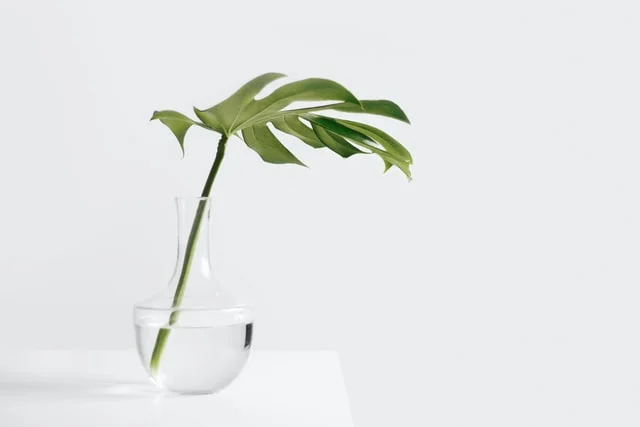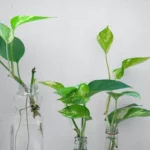Table of Contents
How to Care for Split Leaf Philodendron
Split leaf philodendron plants are a tropical species of plant which have glossy heart shaped leaves, although they can sometimes look round.
As the plants mature, they develop oblong shaped leaves.
The split leaf philodendron is often called the Swiss cheese plant. Young split leaf philodendron plants have upright stems that are sturdy, and these lie horizontally as the plants age.
Split leaf philodendron plants are native to Brazil.
These plants can grow up to about six feet in height. These plants are popular for people who are looking for an indoor plant.
What Does Your Split Leaf Philodendron Require?
Light Requirements
Split leaf philodendron plants do better when they have bright light but not direct sunlight. These plants are good for sitting near a window however the rays from the sun should not be able to touch the foliage.
When Split leaf philodendron plants are getting too much light, the leaves will turn yellow. Leaves will turn yellow through age, but if it happens to a lot of leaves at the same time, then its possibly too much light.
If the stems are leggy and long with large spaces between the leaves, then your Split leaf philodendron is possibly not getting enough light.
Temperature Requirements
Split leaf philodendron tends to thrive in temperatures between eighteen and twenty-seven degrees centigrade. Split leaf philodendrons can tolerate low temperatures at about sixteen degrees centigrade.
Toxicity
Split leaf philodendrons although not actually toxic should not be eaten by humans or any type of animal. These plants are toxic due to the high volume of oxalate crystal that they contain, which can cause digestive issues and cause irritation to the mucous membranes.
Soil Requirements
The best soil type for your split leaf philodendrons is a moss potting mix that is peat based. These plants will do better in soil that are well drained whilst retaining moisture.
Humidity Requirements
The split leaf philodendron leaf is native to the rainforest and prefers areas with above normal humidity. These plants should be sprayed with a mist occasionally.
If the environment is dry, then use a cool-mist type of room humidifier to boose the air around the plant. Dry air can cause the leaves to turn brown.
How to Water Split leaf Philodendron
Allow the top inch of soil to dry out between watering. Insert your finger into the soil and check the level of moisture in the soil. When the plant has droopy leaves, it can be a problem in the amount of water that the plant is getting.
Once the watering level is correct, the plant will be able to quickly bound back. During the spring and autumn months, the soil should be kept moist.
How to Fertilise Split Leaf Philodendron
A liquid foliage fertiliser that has been designed for indoor plants and containing macro-nutrients. Use a water-soluble fertiliser that is equally diluted, and it should be fed during the spring and autumn months.
A poor level of nutrients in the soil can affect the growth of the plant, meaning that your split leaf philodendron will grow slowly or not at all.
Extra Tips for Split Leaf Philodendron
Pest & Diseases
Pests and diseases will weaken split leaf philodendron plants and these plants are susceptible to infestations of insects.
One insect that can cause a problem for the split leaf philodendron is spider mites, which are sap-sucking insects. An infestation of these insects can quickly manifest and cause the leaves to turn yellow.
Other insects that can cause problems for your split leaf philodendron are mealybugs and scale.
If these pests are not dealt with in a timely manner, they can spread to all the nooks and crannies on the plant. The insects pierce the plant using its mouth and accelerates the discoloration of the plants.
Protect the Split leaf philodendron from Pests
Split leaf philodendrons are easy to care for plants, however they need to be checked regularly for any signs of pests.
Mealybugs can be wiped off the plant using a cotton ball dipped in alcohol. Use water and insecticidal soap periodically to assist reducing the risk of pests.
Pruning
Whilst pruning Split leaf philodendron, always wear protective gloves as this plant can irritate the skin.
- Cut the aerial roots away or they can be trained to grow on top of the moss without becoming too crowdy.
- Check the plant routinely for dark parts and shabby areas. Immediately remove the infected areas of the plant.
- Roots that are emerging from the soil need to be pushed back into the soil.
- If the soil is too moist then the leaves will sweat. Avoid watering the plant too much as it may develop root rot.
- Place the plant in an area with good sunlight but not direct. Ensure that the plant is well filtered to prevent the lower leaves drying out.
Propagation
From time to time it’s possible to propagate your split leaf philodendron, and this is a task that is best completed during the spring months.
Propagation from Stem Cutting
- Select a pot that has drainage holes in the bottom.
- Select a pot that is two inches bigger than the pot that the plant is currently in.
- Mix two parts potting soil with one-part perlite.
- Hold the base of the plant and place it into the new pot.
- The top of the root ball should be three inches from the top of the pot. Remove any extra soil that is in the pot.
- Add the compost, potting soil, and perlite until it is about two inches below the top of the pot.
- Water the plant until the excess water has drained out.
- To get a better result add fertiliser regularly between spring and autumn.
Propagation by Layering
- Find a stem that is flexible and bend it to the level of the soil. The stem should be able to bend without breaking.
- Pin the root to the soil. To pin the root, you can use a wire peg and something that is heavy enough.
- Put the cutting into a pot filled with compost. This compost could be specialist for cuttings.
- Water the plant and put it into a propagator or use a plastic bag to cover it. Make use of sticks to keep the plastic off the cuttings.
- Keep the cuttings in a warm place and out of direct sunlight until the roots begin to develop.
Potting Mix
Split leaf philodendron tends to do better in loose soil that is well drained and have a high level of organic matter. These plants can also grow in a complete peat moss soil.
FAQ
How Often Should You Water A Split Leaf Philodendron?
Before watering your split leaf philodendron, take time to check how damp the soil is. When the top half of soil is dry, then water the split leaf philodendron.
These plants will probably need to be watered every seven to ten days.
Split leaf philodendron will require more water during the growing season, which is between February and October.
Avoid making the soil too damp as this can lead to a disease known as root rot.
Can Split Leaf Philodendron Be Kept Indoors?
Split lead philodendron can make good indoor plants; however, they may require more space compared to other plants.
This plant will need to have high level of humidity so that it can grow inside without any problems arising.
Can Artificial Light Be Used for Split Leaf Philodendron?
A lack of light is not a problem for Split leaf philodendron, but it can develop well under artificial light.
Halogen lights and fluorescent lights are good options to provide light for your split leaf philodendron when you are going to provide artificial light.
How Long Will Split Leaf Philodendron plants last?
Split leaf philodendron plants can survive for up to ten years when they are kept under the correct conditions. The lifespan of these plants is relatively long in terms of house plants.
How Vulnerable Are Split Leaf Philodendron Plants to Disease?
Split leaf philodendrons are not the most vulnerable plants when it comes to diseases. These plants do get the occasional disease or pests.
If you notice the early signs of a disease, then adjust the watering regime to help avoid serious problems for the plant.
What Kind of Light Does a Split Lead Philodendron Need?
Split leaf philodendron plants require bright light, but they do better with indirect light. These plants need to be protected from direct sunlight.
Why Are the Leaves on my Split Leaf Philodendron Turning Yellow?
The most common reason for yellow leaves on a split leaf philodendron is an incorrect level of moisture in the soil. Split leaf philodendron should only be watered when the top twenty-five per cent of the soil is dry.
The soil should always be kept damp, but it shouldn’t be wet. During the winter months, allow the plant to dry out a bit more before watering. An infestation of spider mites can also cause the leaves to turn yellow.
Why Are the Leaves on my Split Leaf Philodendron Turning Brown?
The level of humidity that the plant is in can cause the plant to become discolored. A low level of humidity and dry soil can lead to the leaves becoming droopy and turning a brown color.
Spraying the leaves with a mist spray can help with this problem.
Photo by Sarah Dorweiler on Unsplash



